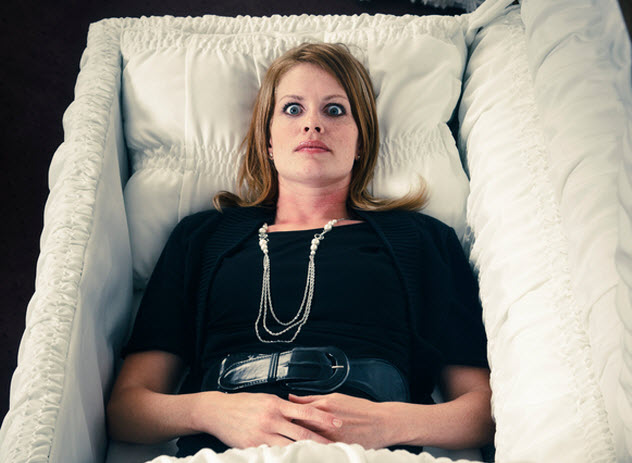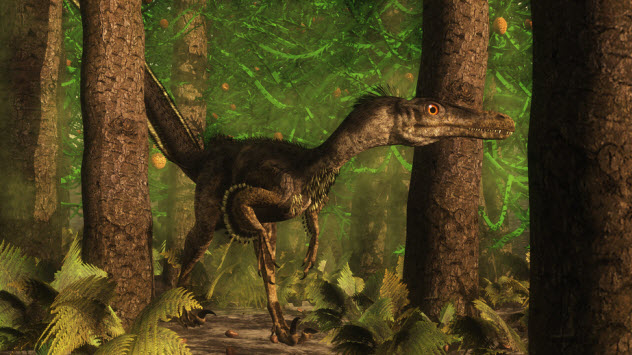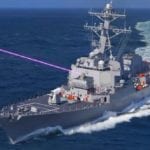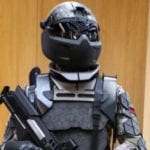 Mysteries
Mysteries  Mysteries
Mysteries  History
History 10 Surprising Stories About the Texas Rangers
 Humans
Humans 10 Philosophers Who Were Driven Mad by Their Own Theories
 Miscellaneous
Miscellaneous 10 Video-Game-Worthy Weapons and Armors from History
 Weird Stuff
Weird Stuff 10 Psychics Who Accurately Predicted Wartime Events
 The Arts
The Arts 10 Pieces of Art Inspired by a Broken Heart
 Health
Health 10 Science Fiction-Sounding New Medical Treatments
 History
History 10 Surprising Facts About the Father of Submarine Warfare
 Space
Space Ten Astonishing New Insights into Alien Worlds
 Weird Stuff
Weird Stuff 10 Bizarre Summer Solstice Rituals Still Practiced Today
 Mysteries
Mysteries Top 10 Haunting Facts About the Ghost Ship MV Alta
 History
History 10 Surprising Stories About the Texas Rangers
 Humans
Humans 10 Philosophers Who Were Driven Mad by Their Own Theories
Who's Behind Listverse?

Jamie Frater
Head Editor
Jamie founded Listverse due to an insatiable desire to share fascinating, obscure, and bizarre facts. He has been a guest speaker on numerous national radio and television stations and is a five time published author.
More About Us Miscellaneous
Miscellaneous 10 Video-Game-Worthy Weapons and Armors from History
 Weird Stuff
Weird Stuff 10 Psychics Who Accurately Predicted Wartime Events
 The Arts
The Arts 10 Pieces of Art Inspired by a Broken Heart
 Health
Health 10 Science Fiction-Sounding New Medical Treatments
 History
History 10 Surprising Facts About the Father of Submarine Warfare
 Space
Space Ten Astonishing New Insights into Alien Worlds
 Weird Stuff
Weird Stuff 10 Bizarre Summer Solstice Rituals Still Practiced Today
10 Implausible Technologies From Fiction That Are On Their Way
Perhaps the greatest joy of fiction lies in its ability to transport us beyond our mundane world into spectacular new realities where anything is possible. Beyond the pure thrill, the best fiction can embolden us to dream of what may be possible in the future and inspire the brightest among us to achieve the remarkable. It’s not that we hope the aliens really do invade, but we’ve always kind of wanted a real-life laser gun . . . you know, just in case.
Well, after compiling this list, we may have reconsidered. These are wildly far-out technologies we never really expected to see in real life that nevertheless may soon be upon us, whether they are good ideas or not (spoiler: mostly not).
10 Deleting Or Replacing Memories

For some time, neurologists have known that the brain is not the biological hard drive that we may perceive it to be, with our experiences etched indelibly as memories. Rather, memories are not so much created as recreated, over and over, through a process known as memory reconsolidation.
When an event is recalled, it is essentially recalibrated and refiled in the brain, often (if not always) colored by the mood and mindset at the time of recall. This is how memories become unreliable. It is also how traumatic memories become less so over time as the initial emotional reaction to the event (the trauma) is adjusted according to the emotional state at the time of recall. This is, of course, particularly effective in guided therapy.
More recently, a link has been made between a certain protein (known as “PKMzeta”) and the retention of memories. Certain drugs (“PKMzeta inhibitors”) have had success with blocking unwanted traumatic memories in patients by—wait for it—inhibiting PKMzeta production, which has the effect of severely limiting long-term recollection.
Meanwhile, researchers have also discovered how to hack the brain’s reconsolidation process to change the information being processed, essentially using the power of suggestion. One psychologist used this technique to convince subjects they’d committed a fictional crime, which they were later able to provide a detailed description of despite the fact that it never happened.
It has been suggested that a combination of these two techniques—blocking PKMzeta production while forcing recall of a memory, invoking the reconsolidation process—could basically result in that memory being deleted forever.
9 Lightsabers

No, really, and yes, this is only number 9. Scientists “accidentally” created a “photonic molecule“—heretofore thought impossible because photons (particles of light) have no mass. By creating a unique medium in which photons interact strongly with each other (as opposed to passing right through each other, per nature), they were able to get the photons to bond . . . forming an (as yet subatomic) new form of matter made out of light.
Of course, the aforementioned “unique medium” consists of a cloud of metal atoms cooled to just above absolute zero, but the result, according to Harvard University physics professor Mikhail Lukin, is “not an inapt analogy to compare this to lightsabers. When these photons interact with each other, they’re pushing against and deflect each other. The physics of what’s happening in these molecules is similar to what we see in the movies.”
You may have suspected that the lightsaber was not the first practical application to come to mind. This type of matter could be particularly useful in the development of quantum computers. It could also one day be used to make crystals of light as well as the long-awaited holiday gift that is sure to result in a rash of accidental Christmas morning self-dismemberings.
8 Lab-Grown Humans Made With Artificial Sperm And Eggs

For some reason which we cannot fathom (okay, maybe to assist the infertile with conception), scientists have long sought a viable technique for producing artificial human eggs and sperm. In 2014, Cambridge researchers were able to produce early, precursor “germ” cells—which could develop into mature cells—using human stem cells, a process only previously accomplished with rodents. As impressive as this is, Chinese scientists recently took it one large, scary step further.
In June 2016, Nanjing Medical University published its study indicating that a new experiment with rodent stem cells produced sperm that were much further along in the maturation process. These sperm were missing tails and therefore had to be injected into a mouse egg—which became fertilized and developed into healthy embryos, which in turn became healthy, live mice. With no fathers.
Given that developments on the human side of this endeavor seem to lag a year or two behind the rodent side, we can likely expect to see this breakthrough with human sperm in the very near future. Assuming that similar breakthroughs with eggs are not far behind, it could well be within our lifetimes that bioengineered organisms—up to and including human beings—become a reality.
7 Restoring The Dead

In what sounds like the beginning of either one of the greatest breakthroughs in medical history or the most horrifying apocalyptic science fiction ever, University of Arizona researcher Peter Rhee has pioneered a process to revive you “when you are at [10 degrees Celsius (50 °F)] with no brain activity, no heartbeat, no blood [and] everyone would agree that you’re dead.”
In a procedure that likewise has shown remarkable success with animal subjects, the body is induced into a state of “therapeutic hypothermia,” which sounds a little counterintuitive. All the blood in the body is then replaced with saline solution, which sounds even more so. In this state, the metabolism stops, and doctors are able to operate without the threat of oxygen deprivation damaging tissue.
When the blood is replaced and the body warmed back up, according to Dr. Rhee, “It’s quite curious, at [30 degrees Celsius (86 °F)], the heart will beat once, as if out of nowhere, then again—then as it gets even warmer, it picks up all by itself.” Rhee’s partner has stated his intention to begin trying the technique on hopelessly injured gunshot victims.
Meanwhile, a separate process, dubbed “The ReAnima Project” (which even sounds like a movie title), also aims to revive clinically brain-dead patients using a combination of techniques. Namely by injecting protein chains into the spinal cord and stem cells into the brain followed by “transcranial laser therapy” and electrical nerve stimulation.
Biotech company Bioquark has been given approval to go to clinical trials with this, despite it sounding a lot like how Phil Coulson was brought back to life after being killed by Loki. Bioquark CEO Ira Pastor says, “This represents the first trial of its kind and another step toward the eventual reversal of death in our lifetime.”
6 Creating Black Holes

In a recent experiment that will likely secure Stephen Hawking a Nobel prize for predicting it four decades ago, physicist Jeff Steinhauer used sound waves to create a simulated “lab-sized black hole” that could prove much of what has been hypothesized about them. This sound hole was created by supercooling and then rapidly heating helium to create a barrier that should be impenetrable by sound waves. This, however, was not what Steinhauer observed.
Rather, as Hawking’s radiation theory predicted that black holes would generate photons, Steinhauer detected phonons—little bundles of energy that create sound—escaping the event horizon of his artificial black hole. Though the results have yet to be independently verified, the discovery is potentially groundbreaking and Nobel inducing.
Of course, scientists at good ol’ CERN are busy attempting to make real black holes, albeit very tiny ones. According to the relatively new hypothesis of gravity’s rainbow—the idea that gravity affects different wavelengths of matter in the same way that a prism affects light—scientists have calculated the energy levels at which they would expect micro black holes to be detectable. If they are successful, this would—in one fell swoop—not only prove gravity’s rainbow but also the existence of parallel universes.
5 Cloned Dinosaurs

It is now well established that dinosaurs have avian ancestry. The birds and chickens strutting about the Earth are one of the great examples of the evolutionary process over millennia. In a truly bizarre experiment, Yale and Harvard researchers hoping to gain insight into this process have created a chicken embryo with a distinctly dinosaur-like snout and palate—specifically, similar to their smaller, feather-covered dinosaur cousins of eons ago. You know, like velociraptor.
Despite the team insisting that they were not trying to create “dino-chickens” and that their main focus was the evolution of the beak, the fact remains that a successful attempt to essentially reverse evolution in a modern species has been made. Make that two attempts: University of Chile researchers recently managed to duplicate this process in the legs of chickens, engineering embryos with long fibulae that connect to the ankle, unlike modern birds. This was, of course, all in an attempt to understand the evolution of modern birds and not in any way an effort to create dinosaurs from chickens. Right?
Well, it depends on whom you ask. No less than famed paleontologist James Horner—the inspiration for Sam Neill’s character in Jurassic Park—asserts that now that “the proof of concept has been accomplished . . . we can get teeth into a bird and just recently a team from Yale and Harvard have managed to retro-engineer (a bird’s) beak back into a dinosaur-looking mouth. So we basically have the tail to reinstate and to transform the wings back into an arm and hand.”
4 Liquid Armor
Meanwhile, in Poland, researchers at Moratex Institute of Security Technologies seem to have perfected a technology that has been in the works since at least 2010—body armor composed not of the traditional tightly interlocking woven fibers but of a type of “shear-thickening” fluid that seems to defy the laws of physics.
And fittingly, as Isaac Newton was one of the founding fathers of modern physics, this type of fluid is referred to as “non-Newtonian.” Unlike normal fluids, which change chemical structure when subjected to pressure or changes in temperature, non-Newtonian fluids change properties when subjected to stress—like a hard impact—causing this particular fluid to instantaneously harden to the point where it can practically vaporize a bullet.
Further, traditional bulletproof vests (typically made of Kevlar) can and do still allow injury to the user. Kevlar can have a lot of give, warping up to 4 centimeters (2 in) inward, depending on the caliber of the weapon. Moratex Deputy Director Marcin Struszczyk says, “Thanks to the properties of the liquid, thanks to the proper formation of the insert, we eliminate 100 percent of this threat because we have reduced the deflection from [4 centimeters (2 in) to 1 centimeter (0.40 in)].”
3 Personal Hologram Devices

Although the idea of a pocket-sized device that can project holograms might seem very Star Trek-y, several companies have already introduced this concept into existing smartphone technology by using supplemental materials or devices. From pyramid-shaped objects that rest on the screen to film overlays to an actual box that you put your phone into (created by British company Virtual Presence), it’s clear that the mobile industry has an eye toward perfecting this technology—and it looks like researchers at Harvard may have given them something to be plenty excited about.
They’ve created a new type of hologram with the use of polarized light and what they are calling “metasurfaces,” resulting in a far smaller amount of light being lost than in the generation of a typical hologram—which means a much better image. The silicon metasurfaces act as “super pixels” responding to different polarization states of the light used to produce the hologram.
Federico Capasso, coauthor of the paper announcing the find, explains, “Polarization adds another dimension to holograms that can be used to protect against counterfeiting and in applications like displays.” If this seems like something that may be difficult to integrate into mobile devices, well, IBM thinks otherwise. They predict 3-D livestreams of your friends floating in empty space above your phone within five years.
2 Invisibility
Rochester University scientists have famously been working on this one for years, first using a series of lenses to bend light around an object. They recently upgraded to a digital version of the same technique, and they are absolutely able to make pretty much any object vanish—but only as an image, viewed on a display in front of the object. Their technique takes a lot of scanning and preparation, a stationary object, and that darn display, which is admittedly not as cool as an actual invisibility cloak. But consider: What if the cloak was made out of displays?
While flexible, bendable displays have been prototyped by many tech companies, LG appears to be taking the concept absurdly seriously. They recently debuted an 45-centimeter (18 in), superthin display that one could literally roll up and swat a fly with, and it’s not too difficult to imagine even larger, thinner displays—wearable ones even—in the very near future. Paired with the inevitable, undoubtedly more powerful next generation of the Rochester team’s light-bending magic, this makes an actual invisible garment seem like something that we might be able to preorder for the next holiday season.
1 Laser Guns

Finally, if you thought that the US Army wasn’t actively pursuing the creation of actual laser guns, then you just don’t know the US Army. In March 2016, they announced that not only are they very close to an official debut of such a weapon but that they expect technology straight out of Star Wars to be standard issue on the battlefield by 2023.
The announcement of the army’s progress on what they call “offensive and defensive direct-energy weapons,” which is a phrase we are sure we have heard in at least one movie, indicated that these weapons are the hallmark of a “third offset” strategy—which basically means “gigantic game changer.” “Offset” refers to the concept of asymmetrical (lopsided) advantage, with the first and second offsets considered to be nuclear weapons and precision weapons, respectively.
Multiple tech companies, including Lockheed Martin, are assisting in pushing this technology through as well. So perhaps we can take solace in the fact that if the US continues to be mired in expensive wars that most of the public doesn’t want, at least the battles will look a lot cooler. On second thought, maybe we don’t want a real laser gun . . . or, with enough lobbying and fundraising, maybe we can convince them to deploy exclusively laser guns that can only be set to “stun.”








